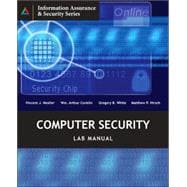| ABOUT THE AUTHORS | IV | ||||
| ACKNOWLEDGMENTS | VI | ||||
| BOOK INTRODUCTION | XIII | ||||
| SECTION 1 NETWORKING BASICS: HOW DO NETWORKS WORK? | |||||
|
3 | (76) | |||
|
6 | (21) | |||
|
8 | (7) | |||
|
15 | (12) | |||
|
27 | (16) | |||
|
28 | (6) | |||
|
34 | (9) | |||
|
43 | (15) | |||
|
43 | (15) | |||
|
58 | (21) | |||
|
59 | (7) | |||
|
66 | (13) | |||
|
79 | (32) | |||
|
80 | (18) | |||
|
84 | (5) | |||
|
89 | (9) | |||
|
98 | (13) | |||
|
100 | (3) | |||
|
103 | (8) | |||
|
111 | (84) | |||
|
114 | (18) | |||
|
115 | (6) | |||
|
121 | (11) | |||
|
132 | (15) | |||
|
133 | (5) | |||
|
138 | (9) | |||
|
147 | (18) | |||
|
148 | (6) | |||
|
154 | (11) | |||
|
165 | (32) | |||
|
166 | (7) | |||
|
173 | (10) | |||
|
183 | (12) | |||
| SECTION 2 VULNERABILITIES AND THREATS-HOW CAN NETWORKS BE COMPROMISED? | 195 | (204) | |||
|
197 | (56) | |||
|
199 | (31) | |||
|
201 | (8) | |||
|
209 | (13) | |||
|
222 | (8) | |||
|
230 | (23) | |||
|
231 | (8) | |||
|
239 | (14) | |||
|
253 | (74) | |||
|
255 | (11) | |||
|
256 | (10) | |||
|
266 | (22) | |||
|
268 | (7) | |||
|
275 | (13) | |||
|
288 | (17) | |||
|
289 | (5) | |||
|
294 | (11) | |||
|
305 | (22) | |||
|
306 | (8) | |||
|
314 | (13) | |||
|
327 | (72) | |||
|
329 | (14) | |||
|
330 | (4) | |||
|
334 | (9) | |||
|
343 | (13) | |||
|
344 | (4) | |||
|
348 | (8) | |||
|
356 | (30) | |||
|
358 | (5) | |||
|
363 | (10) | |||
|
373 | (13) | |||
|
386 | (15) | |||
|
387 | (12) | |||
| SECTION 3 PREVENTION-HOW DO WE PREVENT HARM TO NETWORKS? | 399 | (196) | |||
|
401 | (78) | |||
|
403 | (37) | |||
|
406 | (11) | |||
|
417 | (10) | |||
|
427 | (13) | |||
|
440 | (20) | |||
|
441 | (7) | |||
|
448 | (12) | |||
|
460 | (19) | |||
|
461 | (8) | |||
|
469 | (10) | |||
|
479 | (116) | |||
|
481 | (35) | |||
|
483 | (14) | |||
|
497 | (19) | |||
|
516 | (19) | |||
|
518 | (6) | |||
|
524 | (11) | |||
|
535 | (19) | |||
|
536 | (6) | |||
|
542 | (12) | |||
|
554 | (26) | |||
|
557 | (9) | |||
|
566 | (14) | |||
|
580 | (17) | |||
|
582 | (13) | |||
| SECTION 4 DETECTION AND RESPONSE-HOW DO WE DETECT AND RESPOND TO ATTACKS? | 595 | (145) | |||
|
597 | (100) | |||
|
599 | (20) | |||
|
600 | (8) | |||
|
608 | (11) | |||
|
619 | (27) | |||
|
620 | (12) | |||
|
632 | (14) | |||
|
646 | (15) | |||
|
647 | (14) | |||
|
661 | (14) | |||
|
662 | (13) | |||
|
675 | (22) | |||
|
677 | (10) | |||
|
687 | (10) | |||
|
697 | (43) | |||
|
700 | (15) | |||
|
701 | (14) | |||
|
715 | (13) | |||
|
716 | (12) | |||
|
728 | (12) | |||
|
730 | (10) | |||
| Appendix LAB SETUP INSTRUCTIONS | 740 |








